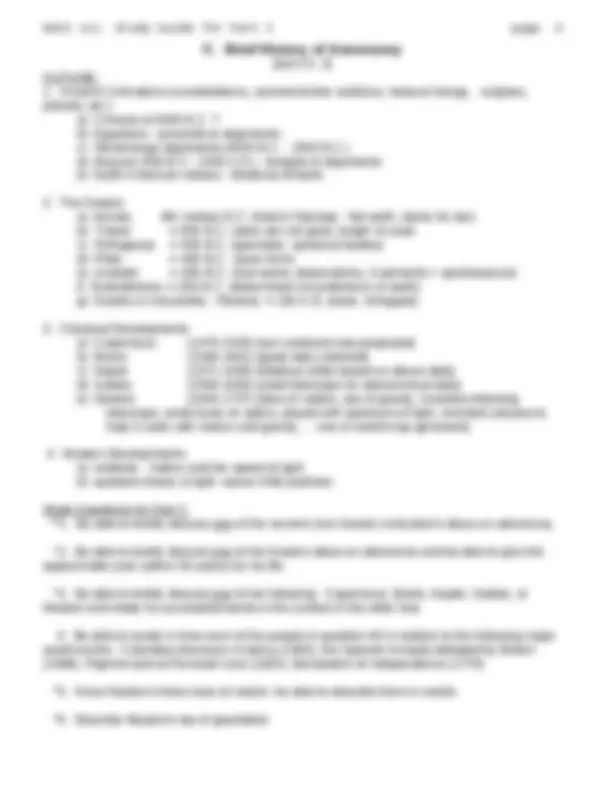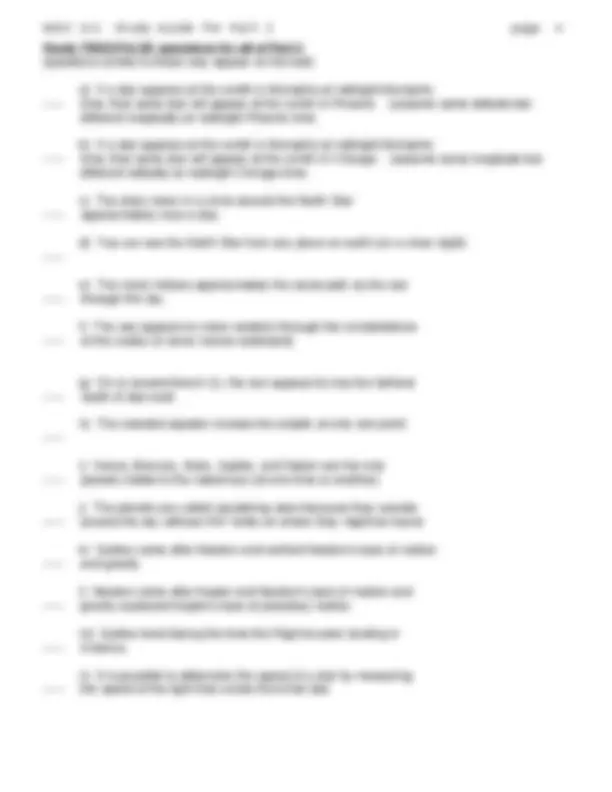




Study with the several resources on Docsity

Earn points by helping other students or get them with a premium plan


Prepare for your exams
Study with the several resources on Docsity

Earn points to download
Earn points by helping other students or get them with a premium plan
Community
Ask the community for help and clear up your study doubts
Discover the best universities in your country according to Docsity users
Free resources
Download our free guides on studying techniques, anxiety management strategies, and thesis advice from Docsity tutors
This study guide provides an introduction to the scientific method in astronomy, basic data about the sun, moon, stars, and planets, and a brief history of astronomy from ancient civilizations to modern developments. It covers topics such as zenith, meridian, ecliptic, constellations, right ascension, declination, summer and winter solstices, equinoxes, heliacal rising, and the scientific contributions of various astronomers.
Typology: Study notes
1 / 4

This page cannot be seen from the preview
Don't miss anything!



What is Astronomy? It is the science which describes the celestial bodies according to their locations, sizes, motions, constitutions, and evolutions. Astronomy, as the definition states, is a science, and so we will study astronomy from the scientific point of view. The first step in the scientific method is to specify the problem. Our definition of astronomy does this in a general way. The second step in the scientific method is the observation of events and gathering of data. The third step is the making up of a theory that tries to account for the past observations and also tries to predict future events. This theory always involves assumptions. Sometimes these assumptions are made consciously by the scientist, and sometimes they are made unconsciously. The fourth step is the actual comparison of theory to those observations of events both past and predicted. This fourth step is a continuing process and goes hand in hand with step two, the gathering of data. Whenever a theory cannot account for all the data, then it must be modified or abandoned and a new theory tried. In this first part we will look at the sky with our unaided eyes and gather that same data that the ancients gathered. Then we will look briefly at the theories that have been proposed in the past to explain that data. In Part II we will consider the nature of light and the basic tools that we have used to tremendously expand our collections of data and test our theories. Then in Parts III, IV, and V we will use this additional data to help us understand our present theories of our solar system, our galaxy, and our universe.
[text: Foundations I, section 1] OUTLINE:
[text: Ch. 1, sections 1-5] OUTLINE:
g) summer and winter solstace (summer solstace: day when position of the rising sun is as far north as it ever gets - longest day of the year; it will start to rise a little bit further south eacy day for the next half year; winter solstace: day when position of the rising sun is as far south as it ever gets - shortest day of the year.) h) equinox (day when the sun rises due East and sets Due West - exactly 12 hours of day and 12 hours of night - happens on first day of spring and first day of fall) i) heliacal rising (day when a star first rises BEFORE the sun)
Study TRUE/FALSE questions for all of Part I: (questions similar to these may appear on the test) a) If a star appears at the zenith in Memphis at midnight Memphis
e) The moon follows approximately the same path as the sun i) Venus, Mercury, Mars, Jupiter, and Saturn are the only